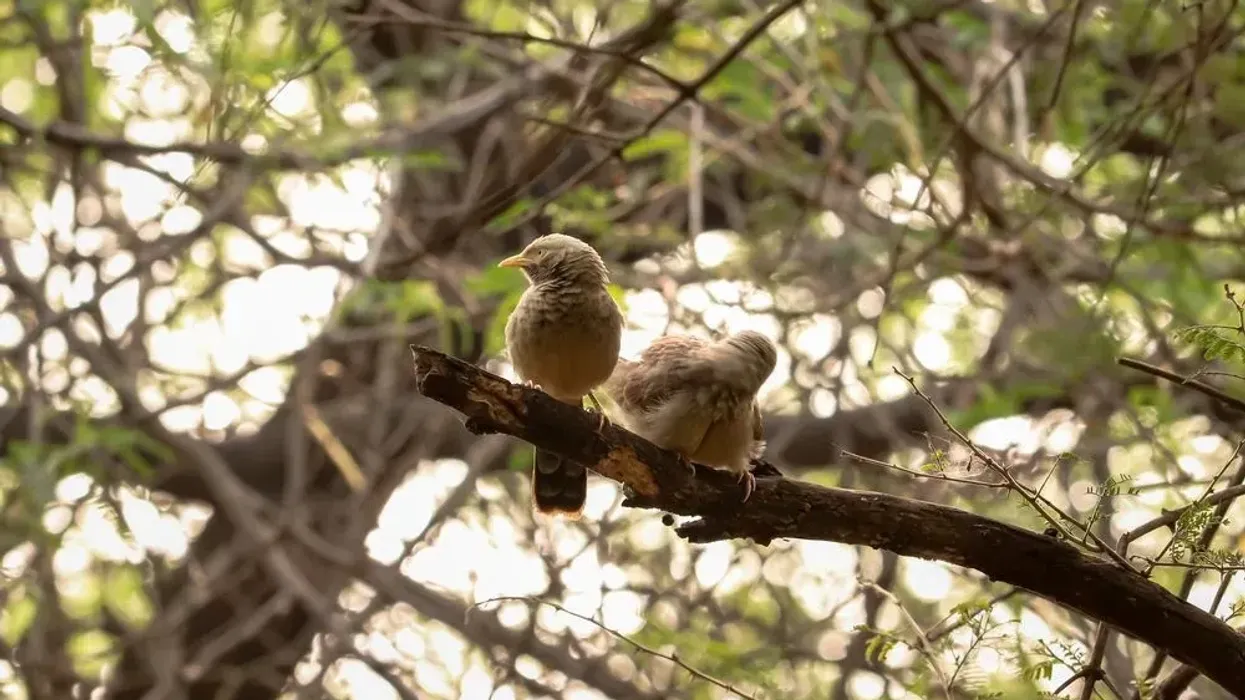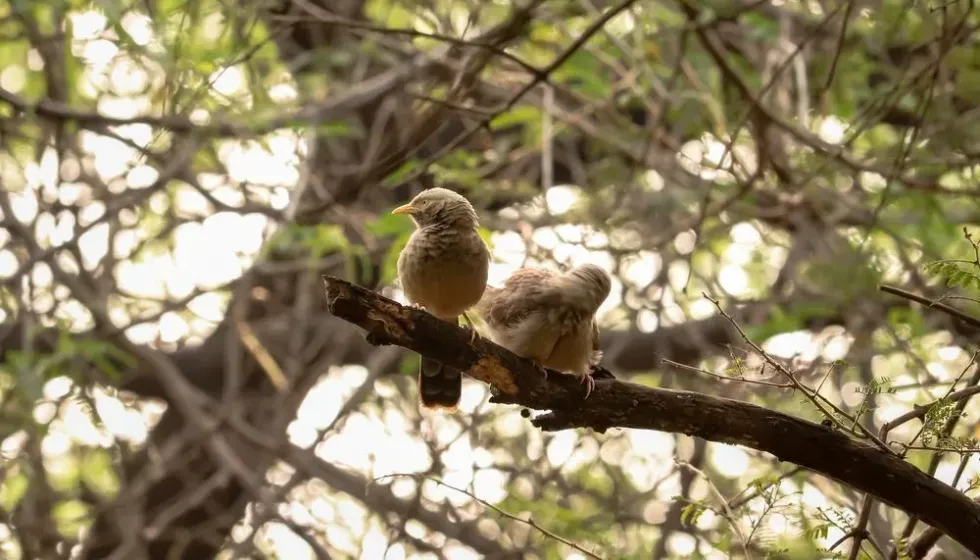Weavers are birds that are known for their remarkable architectural skills. They do, in fact, construct the most intricate and exquisite nests.
The male birds put in a huge amount of effort in building them to attract the females. The little weaver (Ploceus luteolus) is a yellow bird belonging to the Ploceus family.
It is the smallest of all weavers and is also known by several other names including Atlas weaver, Kavirondo little weaver, little masked weaver, West African little weaver, and miniscule yellow weaver.
They were initially described by a German physician, Martin Lichtenstein in the year 1813. To know more little weaver facts keep reading and do not forget to check out our other articles on the social weaver and spiny orb-weaver.
Little Weaver Interesting Facts
What type of animal is a little weaver?
The little weaver (Ploceus luteolus) is a type of bird belonging to the order Passeriformes.
What class of animal does the little weaver belong to?
This species belongs to the Aves class and Ploceus genus.
How many little weavers are there in the world?
The precise population of the little weaver has not been quantified. Their population does not face any threats in the nearest future and is steady.
Where do little weavers live?
The range of the little weaver bird extends from East Africa to West Africa. They are found throughout Ethiopia and Eritrea. Fewer populations were spotted south of Lake Victoria in comparison to other zones.
What is a little weaver habitat?
The main habitat of miniscule yellow weaver is the savannah range surrounded by a lot of acacia trees. It also dwells in dry thorn scrub regions and open scrublands filled with densely planted trees.
They usually build their nests in thorny trees that are large and massive. They can be found lounging around agricultural fields and gardens, as this is where they get their food.
Who does little weaver live with?
The little weaver (Ploceus luteolus) is not very fond of company. They are mostly spotted singly at times can even hang out in pairs and small groups.
How long does a little weaver live?
Weaver birds, in general, can live for 10-15 years. They can live even longer in captivity. This is because they are more vulnerable to injury in the wild. Depending on the species their lifespan may vary slightly.
How do they reproduce?
This species is oviparous so it reproduces by laying eggs. The breeding season begins in June and lasts throughout October in Mauritania, March to May in Uganda, July to October in Ghana, May to November in Senegal, August to October in Mali, and May to September in Niger.
These birds are monogamous and nest alone during the breeding season. On very rare occasions it might nest in colonies.
Males build a nest on the branches of trees at an elevation of 9.8-18 ft (3-5.5 m) from the ground. The nest is spherical with a side entrance.
The female lays a clutch of eggs on the nest with two to three plain white eggs per clutch. Incubation is done by the male as well as the female.
After the incubation period which lasts for 12 days the eggs hatch. The young ones stay with adults for the following two or three weeks and are fed continuously.
What is their conservation status?
As per the IUCN Red List, the conservation status of this species is Least Concern. They have a wide range and it is estimated that the population of this species will only fall by 10% or even lesser in the next ten years. For this reason, they are placed under this category.
Little Weaver Fun Facts
What does the little weaver look like?
The little weaver is yellow and has dark gray streaks on the flight and tail wings. The breeding and non breeding have different appearances while females look the same throughout.
This small bird has a stubby bill and sharp claws. It has a black iris with a brown rim. The non-breeding male and females have a streaked back with a beige face.
The bosom and belly region are likewise a little paler. The breeding male has a dark mask that starts from the forehead and extends a little to the side of the eye. The mask ends near the throat.
Lemon color dominates the bosom and abdominal areas. It is often confused with the slender billed weaver and can only be identified by paying close attention to the bill which is short and thick in the case of little weaver bird.
How cute are they?
This weaver bird's vibrant hue is very appealing. Their calls are generally described as annoying and are not as cute as they look.
How do they communicate?
The little weaver Ploceus luteolus communicates using call notes. They emit brief, repeated squeaky call noises that change in pitch according to the situation or nature of the call. The alarm calls are generally loud and high-pitched. They are often compared to a radio static tune. Males and females are frequently seen dueting before the mating season begins.
How big is the little weaver?
This bird is small enough to fit in your hand. It's that tiny, with a maximum length of barely 5 in (12 cm). This species is three times bigger than the bee hummingbird.
How fast can a little weaver fly?
There is no data on the precise flight speed of this bird. They are reported to travel at a moderate speed with smooth wing movements. They can exert all their energy with rapid wingbeats and flee an area at the sight of a predator.
How much does a little weaver weigh?
This species is quite small and light. They weigh around 0.3-0.5 0z (11-15 g).
What are the male and female names of the species?
The male and female birds do not seem to have separate names. They are called the little weaver Ploceus luteolus.
What would you call a baby little weaver?
The young ones right after they hatch are called hatchlings. A little later, before they find their own homes they are called juveniles.
What do they eat?
For the most part, this bird is a herbivore. It can be found munching on seeds and fruits. Insects, beetles, and caterpillars may be used to feed their chicks. They are only spotted hunting tiny reptiles on very rare occasions. They are chiefly hunted by pygmy falcon, honey badger, snakes, and other small mammals.
Are they dangerous?
This bird is not at all dangerous to humans. What could a bird the size of your palm possibly do? It is, nevertheless, considered a nuisance since it feeds on newly planted seeds and developing plants, causing them to die.
This bird has been hated by the farmers for a long time now. Despite their best efforts, they have been unable to drive them away before their crops are destroyed. To get rid of this bird, they've gone so far as to set fire to nesting places.
Would they make a good pet?
The little weaver (Ploceus luteolus) does not blend in well with humans. It is a wild bird that thrives exclusively in its natural surroundings.
It would be difficult to keep them out of your gardens, and there have been no reports of humans keeping these birds as pets. It is also unlawful to have a weaver bird as a pet in many areas.
Did you know...
Their nesting sites are often near the wasp nests.
This species comes back to the same nesting site every year.
The slender billed weaver and minuscule yellow weaver were separated only based on their choice of habitat.
Why is it called little weaver?
Weaver birds derive their name from their exceptional nest-building skills. They weave their nests so intricately with narrow herbs, grass stems, grass blades, and palm fronds. This bird goes a little extra on the decoration by placing seedheads and other items.
The nest is built so brilliantly without any flaws. That is why they are given this moniker. The compact size of this species has given them the name little weaver bird.
How many eggs does a weaver bird lay?
Weaver birds on average can lay between two to five eggs. This can vary a bit based on the species. While most of the species produce plain white eggs some of them like the village weaver change egg colors on a regular basis.
This is done in order to differentiate the parasitic eggs of birds like the Diederik cuckoo which are often laid in their nests. They are, without a doubt, clever birds. The size of the eggs varies depending on the species.
Here at Kidadl, we have carefully created lots of interesting family friendly animal facts for everyone to discover! For more relatable content, check out these sociable weaver facts and golden orb weaver facts.
You can even occupy yourself at home by coloring in one of our free printable village weaver coloring pages.









